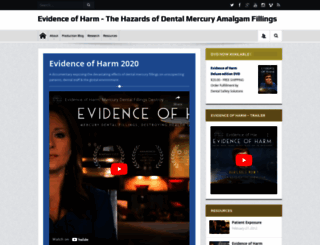Evidence of Harm - The Hazards of Dental Mercury Amalgam Fillings - Evidence of Harm - The Hazards of Dental Mercury Amalgam Fillings
Page Load Speed
5.3 sec in total
First Response
617 ms
Resources Loaded
3.5 sec
Page Rendered
1.2 sec

About Website
Click here to check amazing Evidence Of Harm content. Otherwise, check out these important facts you probably never knew about evidence-of-harm.com
Evidence of Harm examines the hazards of toxic mercury amalgam dental fillings to patients, dental staff and the global environment.
Visit evidence-of-harm.comKey Findings
We analyzed Evidence-of-harm.com page load time and found that the first response time was 617 ms and then it took 4.7 sec to load all DOM resources and completely render a web page. This is a poor result, as 70% of websites can load faster.